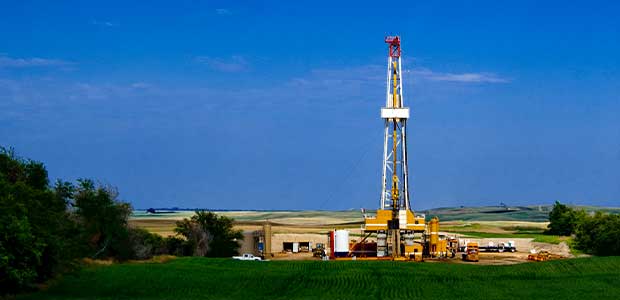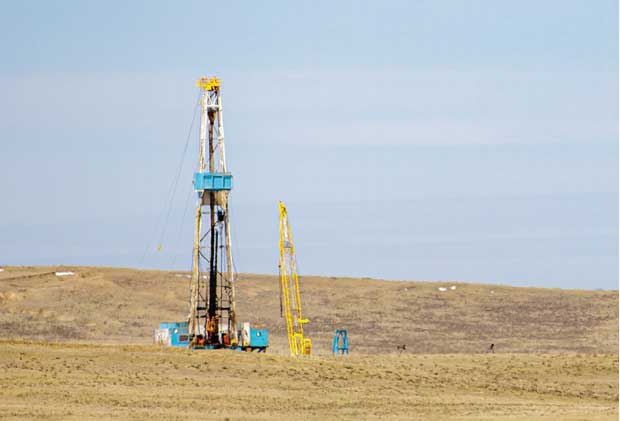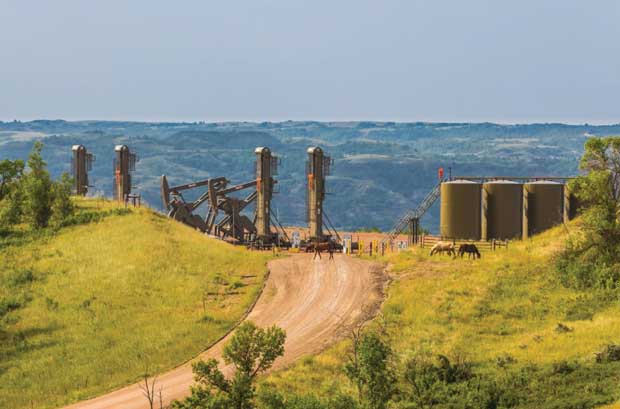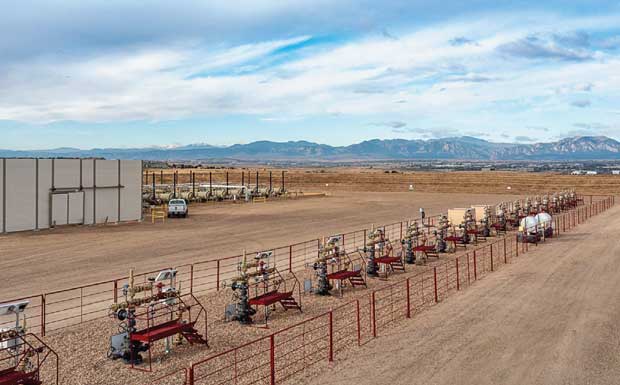
High-Rate Powder River Plays, High-Potential Bakken Refracs Grabbing Spotlight In Rockies
By Danny Boyd
Given the size of the resource prize and the considerable running room in even the more developed parts of Rocky Mountain resource plays, independent operators of all sizes are as focused as ever on drilling new horizonal wells and optimizing oil production in the Niobrara in the Denver-Julesburg Basin, the Bakken/Three Forks in the Williston, and now emerging tight oil plays in the Powder River Basin.
At the top of the list is Bakken heavyweight Continental Resources, which pioneered Rockies resource play development almost two decades ago by drilling and completing the Robert Heuer No. 1-17R in Divide County, N.D. That initial Bakken success eventually led to horizontal development of another stellar bench in the Williston Basin, the Three Forks, as well as the Codell and Niobrara formations in the D-J.
Fast-forward to today and it appears the Powder River is next in line. Continental Resources and a short list of other operators are recording some of the nation’s most productive wells, even as they still delineate positions with multiple stacked pays and overall pay thicknesses as great as 5,000 feet.
Record Powder River IPs
Driven by the initial drilling results targeting stacked tight oil formations, the U.S. Department of Energy is forecasting double-digit production growth in the Powder River this year.
With its recent move to privatize, Continental now leverages all the strengths of one of the largest “big independents” with the nimbleness of a private company to quickly adapt to changes and capture opportunities. That gives the company unique advantages, whether in its core Bakken operations or in its up-and-coming Powder River assets, says Scott Donnelly, vice president in the Williston Basin.
Bakken heavyweight Continental Resources is building on its substantive Rockies operations by bringing in new horizontal wells in the emerging Powder River tight oil plays with 90-day IPs as high as 65,000 bbl/d and restoring production comparable to initial rates in its Bakken refracturing program.
“We are excited that we finally have the ability to avoid the noise of the public markets after turning private. With that, there is a lot of opportunity that presents itself,” Donnelly comments.
Opportunities include taking advantage of in-house expertise honed in the Williston and Anadarko basins to delineate and develop the Niobrara in the Powder River with an eye on the underlying Mowry Shale, adds Ryan Baker, Continental’s vice president in the Powder River.
“Our Powder River and Williston teams are working together to turn the Powder River Basin into the next Williston Basin, and that’s very exciting for our entire team,” Baker relates.
Over two years, the company has amassed 400,000 surface acres after closing on acquisitions from Chesapeake Energy and Samson Resources II, with much of Samson’s assets in the Powder River core in Converse County, Wy. Already the top Williston producer, Continental is now second in the Powder River, with average 90-day initial productivity exceeding an eye-popping 65,000 barrels of oil on the company’s best Niobrara wells in Converse County, he reports.
“Over the past year and a half, we have developed seven of the 10 top 90-day IPs in Niobrara wells on our block of acreage, and we are making great strides toward really understanding and delivering a development program that is competitive across Continental’s full portfolio,” Baker says.
With a $350 million capital budget in the basin this year, Continental is running two-three rigs to add 35 wells to a current producing inventory of about 550, he says. An undisclosed number of potential drilling locations will number in the thousands, Baker adds, while the company’s drilling program on federal lands is largely permitted well into 2025.
With an operations team that knows the importance of incremental value from extending laterals, Continental is challenging the Powder River group to be the first in the company to achieve an average lateral length of 2.5 miles, with expectations to reach that goal in 2024, Baker comments.
“Because our Powder River position is less developed than other, more mature basins, we have a good opportunity to define three-mile development corridors, with infrastructure that matches our modern well performance,” he says.
During stimulation, some wells were completed using as much as 3,000 pounds of proppant and 50 barrels of fluid per lateral foot, while the company assessed reservoir performance, Baker reveals. “Key Niobrara wells with lesser proppant volumes of about 2,000 pounds/foot are exceeding our expectations for optimum oil recovery and value,” he remarks.
Williston Basin Refracs
With its history as an innovation leader in the Bakken play, Continental continues to test completion designs on upspaced wells to enhance returns while pumping slickwater with more than 1,500 pounds of proppant per lateral foot in some areas, Donnelly says.
The company is running four rigs and plans to drill 220 wells this year on its 1.3 million acre position, with the operations team continuing to push laterals beyond three miles while assessing how other operators are faring with four-mile extensions, he says. In-house expertise is optimizing refracs and adding production, Donnelly continues.
“We are excited about opportunities that are not just in the core, and we are also excited about activities that do not even involve a drilling rig,” he says.
He reports that Continental has brought a dozen refractured wells on line since early 2022. While the company keeps refrac production data close to the vest, Donnelly reveals that IPs on most wells have been similar to initial output. Restarting the production cycle with new-well-like production without the capital expense of drilling a new well obviously offers strong economic returns, especially with such a massive well inventory.
That said, he iterates that the refrac program is in its early stages, with the team proving up restimulation concepts this year and into 2024. With a Williston producing inventory of roughly 2,400 wells, Continental has no shortage of potential prospects for a concentrated refrac program.
“I don’t think it is out of line to say we can have a couple hundred of these in our inventory to go after,” Donnelly observes. “At that point, the issue will become timing and how they can compete for capital within the greater portfolio.”
Picking Up the Pace
Technological advancements are accelerating the pace of Williston drilling and completions for EnerPlus Corp as the company tests restimulations using more updated completion designs, says Chief Operating Officer Wade Hutchings.
The Calgary-based company plans to bring five refractured wells on line this year from two different pads, Hutchings says, with results expected to be shared later in the year.
Through a methodical approach to drilling and completion optimization, EnerPlus has steadily grown its daily production to more than 66,600 barrels of oil equivalent. This year, the company is running two rigs to drill 50 new wells, primarily in the heart of its position where the Three Forks and the Middle Bakken can be exploited jointly.
Bought from Hess two years ago, the company’s Little Knife and Murphy Creek acreage in Dunn County, N.D., includes wells between five and 10 years old that Hutchings says are considered “perfect” refrac candidates. There may be as many as 60 additional refracs over the next several years using the latest techniques, including cementing a 4.0-inch liner inside typical 5.5-inch casing to ensure wellbore integrity.
“Assuming that we are successful, we would layer in several of these refracs each year to give our program a little bit more diversity and flexibility,” Hutchings says.
Following additions and strategic divestments, EnerPlus has assembled 236,000 net acres in the Williston, mostly in what Hutchings calls the “core of the core,” giving the company more than a decade of running room with 655 core and extended-core drilling locations in North Dakota.
A largely de-risked position on the Fort Berthold Indian Reservation in McKenzie County, N.D., and at Little Knife and Murphy Creek accounts for 3% of the basin’s gross production, he points out.
“Based on our own analysis, we think we have at least 10% of the remaining Tier 1 inventory left to develop in the Williston Basin,” Hutchings estimates. “That area has the best subsurface properties in terms of rock quality and oil in place.”
The core does not count 200 locations mostly in Williams County, N.D., with upside through stimulation advances, cost improvements and sustained higher oil prices, he adds.
Growing Production
Through a methodical approach to drilling and completion optimization, EnerPlus has pushed production beyond 66,600 barrels of oil equivalent a day. This year, the company is running two rigs to drill 50 new wells, chiefly in the heart of its position where the Three Forks and the middle Bakken often can be exploited jointly with individual wells, Hutchings says.
In Williams County, even though the Three Forks may be charged, optimum recovery often is realized from both benches by landing wells in the middle Bakken, he adds.
Work continues to apply three-mile laterals wherever possible, although longer extensions are especially achievable in Williams County, Hutchings observes. “A lot of our core acreage has been developed with two-mile laterals, which will likely remain the preferred length there,” he explains.
Across EnerPlus’ position, completion practices continue to evolve, with frac stages now averaging about 300 feet and proppant volumes typically 800-900 pounds/foot. This year, the company is using more 100-mesh sand instead of 40-70 mesh sand, and increased pumping rates, Hutchings says.
“Although the industry is not in a mode in the Bakken where we were five-six years ago, when there were massive changes in stimulation design, we still are tweaking the recipe and the approach,” he says. Both 30-day and 180-day IPs continue to track company type curves, with current rates exceeding last year’s.
Although inflationary pressures pushed up well costs post-Covid, Hutchings reports that strategies such as buying tubulars and consumable materials on a quarterly basis are helping drive them lower this year for his company.
Although EnerPlus has interests in the Marcellus and 33,000 acres in the D-J Basin, where executives are evaluating the best value option, the company will continue to focus mostly on the Williston and eye potential bolt-on opportunities and acquisitions to propel growth, according to Hutchings.
“There will be more transactions and more consolidation in the basin and we want to be in a position to take advantage of that, just as we did a couple of years ago,” Hutchings concludes.
Focused On The D-J
In late June, Civitas Resources Inc.—a homegrown Colorado company that had billed itself as the largest “pure play” D-J Basin producer—announced that it had entered the Permian Basin through two purchase agreements totaling $4.7 billion. While Civitas is stepping into the Permian’s Midland and Delaware sub-basins through acquisitions of affiliates of Hibernia Energy III and Tap Rock Resources, Chief Executive Chris Doyle says the D-J will very much remain in its focus. The Permian deals add an expected 105,000 boe/d of production to Civitas’ leading production position in the D-J.
Civitas Resources’ first-quarter D-J Basin production was nearly 160,000 boe/d, predominately liquids. The company is running two rigs and plans to drill as many as 110 horizontal wells this year on its 470,000-net acre position in the D-J Basin, including some three- and four-mile laterals.
“Simply put, these transactions make Civitas a better company, and we see tremendous opportunity to add value in the Permian that will complement our leading oil position in the D-J Basin,” he comments.
Chevron’s acquisition of PDC has consolidated the D-J even more, but he insists that the high-profile transaction also speaks volumes about the basin’s premium quality. “Because the D-J is so consolidated, a lot of times what gets lost is the high-quality nature of this basin,” he says.
With 1,000 gross locations across 470,000 net acres, Doyle says Civitas holds a differentiated D-J position with liquids output expected to be 70% this year. Oil production alone made up 45% of total 2022 production. Overall, first-quarter 2023 production approached 160,000 boe/d.
“We are in one of the few real oil provinces that are most attractive to our industry, and we have one of the oiliest positions in the entire D-J,” he offers.
Running two rigs with plans to drill as many as 110 horizontal wells this year, the company has begun developing some three- and four-mile laterals, although the average is 2.5 miles (drilled in just over five days per lateral), Doyle points out.
With operations divided into four segments, the company plans to later use more up-to-date lateral lengths and completion techniques in the gassier northern area in Weld County, Co., where drilling was concentrated during the basin’s earlier days, he says.
For now, the company is spending most of its $725 million-$825 million capital budget this year to target the Niobrara in its western and southern acreage areas, according to Doyle. In fact, he points out that results from the southern position have driven much of the company’s growth and performance since its founding 18 months ago from the combination of Bonanza Creek Energy, Extraction Oil & Gas, HighPoint Resources and Crestone Peak Resources. In early 2022, the company acquired D-J producer Bison Oil & Gas II.
Civitas continues to improve well performance and capital efficiency in the D-J, Doyle says. In late 2022, the company ran fiber optics on three wells and continues to mine data to identify how to further optimize completion designs, he reports.
In the Watkins Field, the company has created an exceptional dataset over the past few years and has arrived at the best balance of fracturing design performance versus cost, Doyle claims. Generally, the Codell needs less water and sand because of the reservoir’s good deliverability, while the Niobrara requires more to unlock its potential, he explains.
Civitas is in the second phase of a trial project to replace frac plugs on shorter laterals with ball seats, Doyle says, adding that he is bullish on the prospect for improved results. The company also continues to utilize extreme limited-entry perforating, but is in the optimization phase of enhancing uniformity and limiting wasted capital and horsepower in fuel costs, he says.
The company also continues to work toward continually lowering emissions and reducing its well site surface footprint, Doyle adds. In November, the Colorado Oil & Gas Conservation Commission approved Civitas’ Comprehensive Area Plan (CAP) for its Box Elder unit, making it Colorado’s first CAP approval with preliminary siting of wells and equipment on 11 pads over 38,000 gross acres in the southern area. New location permits are expected this year.
“We are going to leverage technology to reduce the number of pads and surface impact and to optimize this resource for all of our stakeholders,” Doyle concludes.
Adding Williston Assets
Consolidation continues in the Rockies as operators search for high-reward bolt-on opportunities and acquisition targets to supplement growth through the drill bit. The latest examples occurred in late May when first Chevron Corp. revealed a definitive agreement to acquire PDC Energy Inc. and its 275,000 net acres in the D-J Basin, and then Chord Energy Corp. unveiled plans to acquire XTO Energy’s Williston holdings—including 62,000 net acres, 123 estimated net 10,000-foot equivalent drilling locations, largely undeveloped drilling spacing units, and more than 6,000 boe/d of production.
On May 22, Chord announced a tentative deal to acquire XTO Energy’s Williston assets, which include 62,000 net acres and 123 estimated net locations.
Chord Energy was formed last year through the merger of Oasis Petroleum Inc. and Whiting Petroleum Corp. While the Houston-based company works toward closing the deal with XTO, it continues to develop its existing 963,000 net-acre Williston position and 73% working interest with four active rigs.
With the acquisition this year, the company expects to spend 80% of its $825 million-$865 million budget on drilling and completion work in North Dakota, according to its latest investor presentation.
Investment, largely across North Dakota’s Williams, McKenzie, Mountrail and Dunn counties, includes 30% at Indian Hills, the city of Williston and Painted Woods; 20% at Sanish; 15% at Foreman Butte and Hidden Bench; and 5-10% at Wild Basin and South Nesson, Fort Berthold, Alger, Red Bank and Cassandra.
In May, the company reported a decade of drilling inventory with 1,085 locations considered economic at a $60 breakeven oil price. On its current acreage, Chord says three-mile lateral designs are resulting in a 43% uplift in cumulative oil production with a 54% gain at Indian Hills. Extensive analogs across the Williston validate drilling efficiencies and EUR uplift, the company says. Drilling times on three-mile laterals are averaging only 14.2 days from spud to rig release.
Chord’s reported first-quarter production was 165,000 boe/d, including 95,000 bbl/d of oil.
For other great articles about exploration, drilling, completions and production, subscribe to The American Oil & Gas Reporter and bookmark www.aogr.com.









